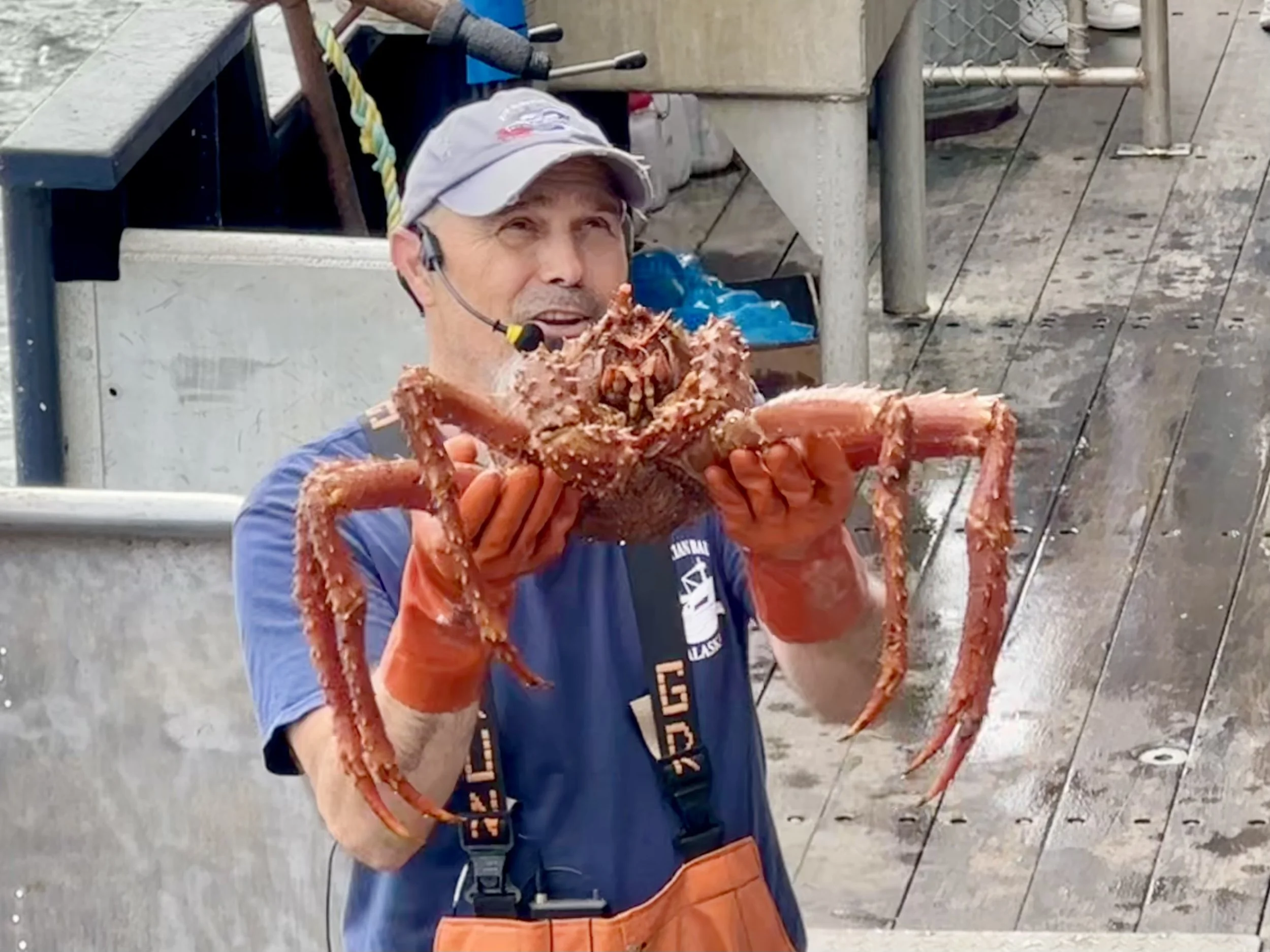Sea Crab Fishing in the Inside Passage
It was our first visit to Alaska, and I wanted to do something educational, fun, and uniquely Alaskan. So while the ship was in port in Ketchikan, Steve and I did the Bering Sea Crab Fishermen’s Tour.
We disembarked the Eurodam, walked to the other end of the pier, and boarded the Aleutian Ballad. This was an authentic fishing vessel from the popular reality television series, Deadliest Catch. The 107-foot boat had been retrofitted with passenger seating on two levels.


The crew was made up of three seasoned Alaskan fishermen with 40+ years of experience. They shared a story from Season 2 of Deadliest Catch: a 50-foot rogue wave smashed into the Aleutian Ballad, flipping it onto its side. Amazingly, the boat righted itself, thanks to the weight of the king crabs in its hull! There were several other stories just as harrowing, and we marveled at how these fishermen repeatedly risk their lives in the Bering Strait.
Fortunately, there would be no rogue waves here in the Inside Passage! We sailed through calm waters, enjoying the sunshine, the view, and the fresh sea air.



The crew demonstrated three types of fishing, all of which had the same basic steps:
Throw the grappling hook to grab the colorful floats and pull them in.
Haul in the line and bring the pot/trap on board. A “coiler” machine quickly winds the 600+ feet of line as it is pulled in.
Remove the catch from the line or trap.
Drop the pot back into the water, let the line out, and toss the floats out.
Longline fishing used a long, thin rope with baited circular hooks attached at regular intervals. They pulled in a line that had been set earlier and found two spiny rockfish. (That evening in the ship’s Dining Room, Steve had a rockfish sandwich and pronounced it delicious.)




The boat stopped near an island, and a crew member tossed a herring into the water, about ten feet from the boat. Soon a bald eagle swooped in, grasped the fish in its talons, and flew off, without missing a beat! We watched as more eagles flew by the boat, snatching about a dozen herring in all. I counted at least five different eagles. We learned that the eagles can carry large salmon that are half their weight, so our herring were just bite-sized snacks. It was exhilarating to see them in action, just a few yards away.


It was time to get back to fishing. The crew hauled in a dome/cone crab pot. Inside were dozens of box crabs, which are king crabs with short, stubby legs and small claws. There were also some opilio crabs, a type of snow crab. We all had the chance to hold crabs and see them up close. I thought the box crab was cute!




Finally, it was time for king crab fishing! The king crab pot was shaped like a box, with an iron frame and intricate meshing that trapped large crabs and allowed smaller crabs to escape. Since kings crabs are caught in the Bering Sea during October, this trap contained rubber king crabs. There were live king crabs in a tank onboard, so everyone had a chance to see one up close. (We didn’t hold the king crabs ourselves because their spines are sharp.)
On one side of the king crab pot were hundreds of colorful tags, each one in memory of a lost fisherman. Their families are assisted by the Aleutian Ballad Crab Fisherman’s Memorial Fund.



Before the boat turned back to Ketchikan, the crew had a surprise for us. They pulled up one more trap, a barrel containing a special sea critter. It wasn’t a crab, but they had found in one of their crab pots the previous day. Watch the video to find out what it was!
We sailed back to Ketchikan and the Eurodam, glad to be out on the water on such a lovely day, and with a new appreciation for the beauty (and marine bounty) of Alaska.



